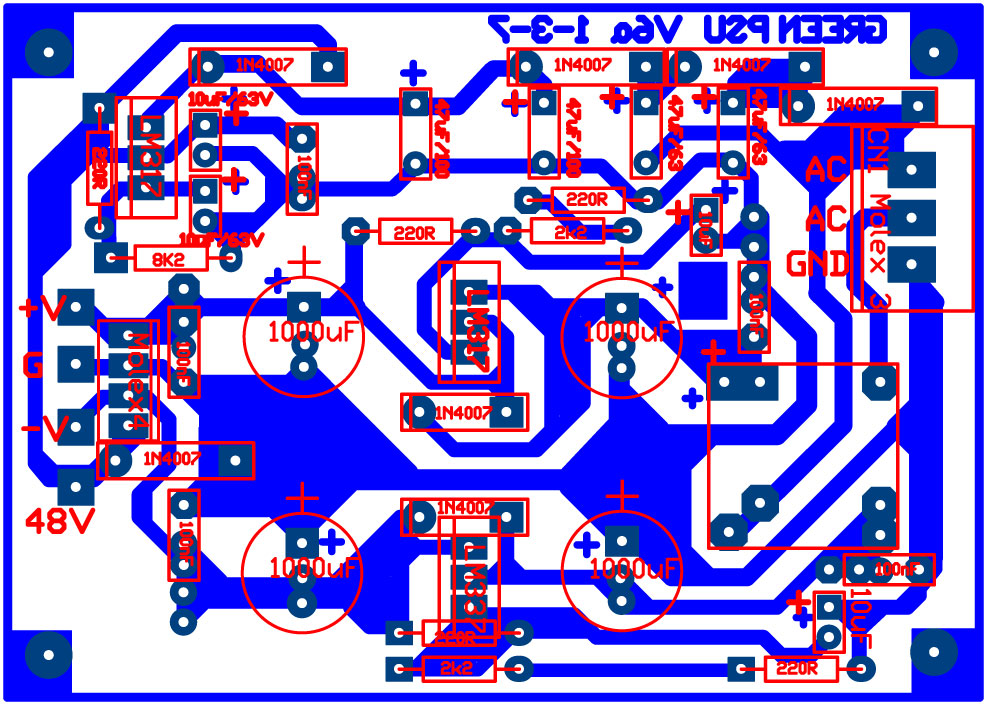moamps
Well-known member
The board you have is different than someone posted earlier. Look closer to the bottom, the wire you soldered connects in and out of the IC. Just cut it and try once again.

Rob Flinn said:Sorry, disagee with you there. if someone is using the mic pre wired into a patchbay it is quite easy to short the mic pre input if someone plugs in/out of the patchbay while the phantom is on. In the case you talk about that would put 63v across the 317.


Whoops said:Both diodes protect the regulator from caps discharge in the event the input or output gets shorted. The LM317 has built in output short protection on it's own. The protection might not be as sturdy as the TL783.
but hey let's not hijack this thread
The diodes do not protect IC from too high IN-OUT voltage difference when the output is shorted. Peter suggested a Zener diode across IC to additional protection, it should be rated 3 or 5W. In this application this IC works fine if the number of channels is small, but I will never try to save 1€ in this position, so I'm with Rob here, TL783 should be used.Whoops said:Both diodes protect the regulator from caps discharge in the event the input or output gets shorted.
peterc said:Amaury, what is the voltage with no mic connected? I f you have a mic connected it will pull the 48v down to a lower value, sometimes as low as 25v, which is the lowest I have seen.
The LM317 formula gives a value of 47.84v using a 220R + 8k2 combination.
Walrus said:From the other thread, the LM317 requires a minimum load of 10mA to regulate correctly.
The voltage setting resistors only draw about 5mA, so unless there is a Phantom On LED drawing another 5mA, the regulator my not be regulating properly
Walrus said:No idea!
amaurythewarrior said:I measure something close to this... (in yellow) That's with no mic connected.
And actually, 35v AC across my input on the board... (from the transformer, I mean)
Here quadrupler is used to rise/convert 15VAC to about 60VDC.Rob Flinn said:Then you have 35x1.414 =49.49vd.c when you have rectified it. The LM317 need at least 3v across it to regulate. i.e you need to feed it with at least 51v (preferably a bit more). Therefore if that is what the reg is being fed, it's not massively surprising that you don't get 48v out of it.